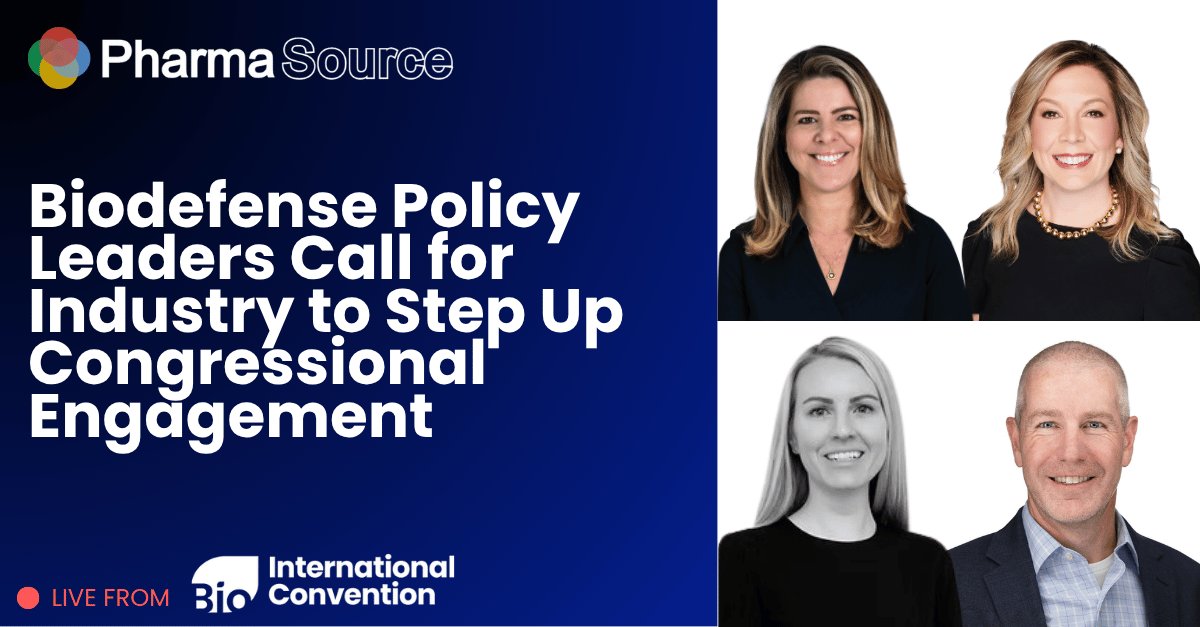“This enterprise is lacking congressional support. The host of prior leaders in this policy space have left,” warn biodefense advocates pushing for renewed bipartisan commitment
Jennifer Alton, President of Pathway Policy Group, delivered this stark assessment during a biodefense policy panel at Bio International Convention on 16th June 2025, highlighting a critical gap in congressional leadership that threatens America’s health security infrastructure.
Alton brings decades of experience working on Capitol Hill health policy issues, particularly around biodefense and medical countermeasures. She was joined by Kelly Childress Lange, Partner at East End Group with extensive national security policy background, and Jill Hamaker, Senior Partner at CGCN, a Republican strategic communications firm and Mike Stebbins, SVP Advanced Technology International.
In this comprehensive policy outlook session, the Washington insiders shared critical insights on how biodefense companies must actively engage Congress to secure funding and position innovative technologies to meet national security needs as the Trump administration reshapes federal health security policy.
Congressional Leadership Vacuum Creates Urgent Need for New Champions
The biodefense community faces a significant challenge as longtime congressional supporters have departed, leaving dangerous gaps in institutional knowledge and advocacy support.
“Many of the leaders have retired or not sought re-election,” Jennifer explained. “So it is a space that is in need of congressional leadership on both sides of the aisle.”
Kelly emphasised the importance of finding new champions with the right background: “As we’re looking ahead into new members that we want to engage, we’ve looked deep into the national security space and finding members that not only understand healthcare but really have the Intel background so they can understand why this is absolutely critical.”
The panel identified promising new leaders including Dr Neil Dunn, who “has an amazing background in national security space” and Senator Mullin. These members “come at it from the mission background” rather than purely healthcare perspectives.
“We expect a lot of industry, and we expect them to step up and come to the table and be there and be ready,” Kelly stated. “The biggest issue is that companies are going to be able to build here and provide things here, they have to know that there is someone on the back end that’s going to help sustain it.”
Industry Cannot Remain Passive in Policy Engagement
The panellists unanimously stressed that biodefense companies must abandon passive approaches and actively drive congressional relationships to secure critical funding and support.
“Being involved is not passive. You can’t be passive in this space. You have to be active,” Mike Stebbins, the panel chair, emphasised. “You have to network, particularly the smaller companies.”
Kelly reinforced this message: “Being active really means engaging with Congress. Congress absolutely has to hear stories from entities in their states, in their districts, and that’s the way we’ve been able to keep this going over time.”
Jill provided practical guidance for companies: “Your representative that represents your manufacturing site, you call on your own and schedule a meeting. They’re going to take the meeting to have a conversation with you. It’s about jobs in their districts.”
She noted that initial conversations with junior staff often escalate quickly: “You may find that your first conversation with the younger staff member ends up the following week with the member of Congress, because there’s so many jobs in the district.”
Jennifer recommended strategic engagement through established channels: “Ways for industry to engage is through participating in trade associations and coalitions. Bio has a really robust biodefence work group, there’s the Medical Countermeasures Coalition, and multiple consortia which benefit from companies being members.”
National Security Framing Essential for Conservative Support
The panel advised companies to position their technologies within national security contexts rather than purely healthcare frameworks, particularly when engaging with Republican lawmakers who control key funding decisions.
“Don’t be afraid to go have conversations with those members who you may disagree with personally on a whole host of issues, but through the national security biodefence lens, they’re going to be more supportive of that spending over at HHS,” Jill advised.
Jennifer reinforced this strategic approach: “COVID is kind of a dirty word right now, so reminding people that this infrastructure was actually put in place long before COVID and it really did have that eye towards the material threat determination process.”
The bipartisan nature of biodefense historically provides hope. “This has been historically a very bipartisan issue. It absolutely should stay that way,” Kelly noted, referencing successful partnerships between ideologically different lawmakers who found common ground on health security.
Jennifer cited the productive relationship between Senator Burr and Senator Ted Kennedy: “They could be more different from an ideological perspective, but they found this place to work together very productively.”
Funding Challenges Mount Despite Mission Success
The Pandemic and All-Hazards Preparedness Act (PAPA) remains unauthorised, creating uncertainty for the medical countermeasure enterprise despite its proven track record.
“PAPA has not been reauthorised. Unfortunately, it fell out of the end-of-year package, along with a whole host of healthcare policy items,” Jill explained. “We’re hopeful that as Congress looks to the fall, that the pandemic and all hazards preparedness act can be prioritised again.”
The funding paradox presents particular challenges. “Because there’s been so much success, the funding necessarily hasn’t followed,” Jill observed. “The annual appropriations process for this space has been difficult.”
However, domestic manufacturing alignment with Trump administration priorities creates new opportunities. “Domestic manufacturing is definitely a focus for the Trump administration,” Jill noted, referencing close coordination between the White House Made in America office and Administration for Strategic Preparedness and Response (ASPR) leadership.
The sustainability question remains critical. “How do you ensure that the partnership not only starts off well, but then continues over the course of engagement?” Jill asked, highlighting concerns about funding gaps after initial agreements.














 Stay ahead of trends and best practices
Stay ahead of trends and best practices
